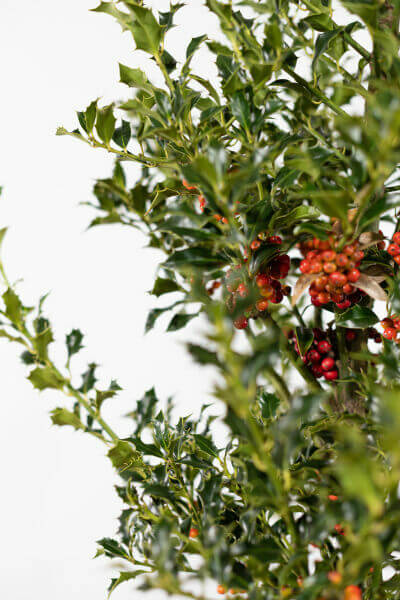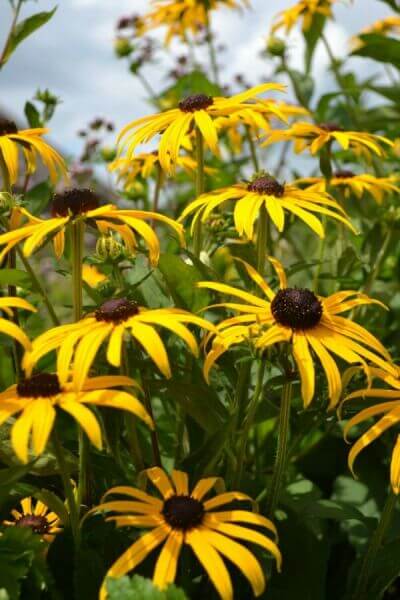Best Hedge Plants For Security Hedges
Best Hedge Plants For Security Hedges
Blog Article
Compact Hedge Plants For Urban Gardens
Improve your garden's attraction with lush hedge varieties such as Yew (Taxus), Thuja, Laurel, Photinia, and Bamboo, commemorated for their structural stability and environmental advantages.
Yew and Thuja supply evergreen protection and winter season strength, while Laurel provides fast development and broad, aromatic leaves.
Photinia adds seasonal charm with its vibrant red foliage, and Bamboo provides a low-maintenance, peaceful atmosphere.
These hedges enhance air quality, lower noise, and create tranquil, personal areas.
Appropriate planting, spacing, and upkeep make sure energetic development and ecological harmony.
Check out how these rich varieties can elevate your garden's appeal and wellness.
Secret Takeaways
Change Your Garden With Lush Hedge Ranges
- Select Yew for its thick, evergreen growth and exceptional durability.
- Select Laurel for its fast growth and broad leaves, making sure fast personal privacy.
- Pick Photinia for its lively seasonal foliage, which turns a striking dark red.
- Use Bamboo for a low-maintenance, winter-hardy hedge with aesthetic appeal.
- Space plants 2-3 per meter and prune routinely for ideal development and health.
Popular Hedge Plants
When transforming a garden with lavish hedge ranges, it's important to consider popular hedge plants such as Yew, Thuja, Laurel, and Photinia due to their unique qualities and benefits.
Yew (Taxus) is extremely respected for its longevity and thick, green growth, making it a prime option for sustaining landscapes.
Thuja is noted for its evergreen foliage and robust winter season strength.
Photinia includes seasonal vibrancy with red leaves that darken with time, creating dynamic visual appeal.
Laurel provides quick growth and aromatic, broad leaves, ideal for fast privacy.
Furthermore, Bamboo is an excellent option for atmosphere, offering a low-maintenance, winter-hardy choice that enhances the garden's aesthetic with its sophisticated, swaying canes.
These selections deal with a range of horticultural requirements and preferences.
Advantages of Garden Hedges
Garden hedges offer a plethora of advantages, making them a valuable addition to any landscape. These natural barriers are economical to carry out and supply significant wind security, boosting air circulation and contributing to sound decrease. The thick foliage of hedges like Thuja and Beech makes sure personal privacy by blocking visibility, creating a peaceful and secluded environment.
Hedges likewise play an essential function in microclimate guideline, providing a stable environment that promotes plant growth and decreases temperature level fluctuations. Their elaborate leaf structures filter contaminants, enhancing air quality and contributing to a healthier garden environment.
Furthermore, hedges master sound reduction, absorbing and deflecting acoustic waves to lower ambient noise levels. This double functionality of providing both visual and acoustic privacy improves the general tranquility and aesthetic appeal of any garden.
Planting and Upkeep Tips
For a successful hedge, meticulous preparation of the planting area is important. Guarantee the soil has proper pH and drain to support strong root advancement.
Space the plants appropriately for the picked types. Water the hedge regularly throughout its preliminary development stage, changing as needed with seasonal modifications.
Implement a systematic bug control and disease avoidance technique, using natural or chemical treatments when required. Regularly inspect for aphids, mites, and fungal infections.
Apply mulch to maintain wetness and suppress weeds. Seasonal pruning promotes thick growth and air circulation, essential for plant health.
Following these standards will help you cultivate a vibrant, well-maintained hedge that enhances the charm of your garden.
Spacing and Cutting Guidelines
Spacing and Cutting Guidelines
Correct spacing and cutting are vital for cultivating healthy, visually appealing hedges. Appropriate spacing guarantees each plant gets sufficient nutrients, light, and airflow.
Follow these standards for optimal hedge maintenance:
- Spacing: Position hedge plants 2-3 plants per meter to motivate robust growth.
- Pruning Methods: Routine pruning is important for keeping desired hedge height and shape. Trim brand-new development in summer and cut back older wood during winter season.
- Seasonal Care: Change cutting techniques and schedules according to seasonal requirements to make sure plant health.
- Hedge Height: Frequently monitor and trim to preserve the wanted hedge height and attain uniform visual appeals.
Adhering to these steps will ensure your hedge flourishes, improving both the appeal and functionality of your garden.
Selecting the Right Hedge
Picking the Right Hedge
Selecting the appropriate hedge involves evaluating factors such as fully grown height, foliage density, and ecological durability. Effective hedge plant choice requires understanding each species' growth characteristics and site-specific versatility.
For example, Yew (Taxus) offers excellent durability and thick development, while Thuja is noteworthy for its winter season durability. Furthermore, considering upkeep requirements is vital; fast-growing types like Laurel or Privet need routine cutting, whereas low-maintenance choices like Bamboo or Ivy might be more suitable for those looking for minimal upkeep.
Environmental aspects such as soil type, light accessibility, and moisture conditions should likewise direct the selection process. This mindful method ensures the chosen hedges will thrive, providing both functional and visual benefits to the garden landscape.
Shipment and Planting Suggestions
To ensure your hedge plants grow, they ought to be delivered by specialized couriers and planted quickly upon arrival.
Follow these vital steps for effective planting:
- Soil Preparation: Enrich the soil with raw material to enhance drainage and nutrient content.
- Planting Depth: Create a trench two times the width and equivalent to the depth of the root ball.
- Watering Techniques: Water completely after planting, keeping the soil consistently moist but not filled.
- Mulching: Apply a layer of mulch to keep wetness and reduce weeds.
Consumer Support and Service
Given the important function of prompt help in horticultural pursuits, our customer support team is offered 6 days a week through telephone, e-mail, and social networks to offer expert recommendations and quickly attend to any issues. Their devotion to fast action times makes sure consumer fulfillment by solving questions related to plant health, optimal planting methods, and maintenance schedules.

-----------------
Within 24 hours
This thorough support group, strengthened by an excellent 9.3/ 10 customer score, highlights our commitment to improving the gardening experience for every single client.
Often Asked Concerns
The Length Of Time Does It Consider Hedge Plants to Develop?
Hedge plants usually need one to three years to become fully established, with the exact duration varying by types and growing conditions.
Reliable care throughout this important duration is vital for robust development. Constant watering, watchful weed control, and suitable fertilizer application are essential in promoting strong root advancement.
For instance, fast-growing species like Laurel may establish quicker, while slower-growing varieties such as Yew may take longer. Thorough upkeep speeds up the establishment process, resulting in healthy and dense hedges.
What Are the Best Hedge Plants for Privacy?
The question of the finest hedge plants for personal privacy involves evaluating evergreen and deciduous alternatives.
Evergreen hedges like Thuja, Laurel, and Cypress supply year-round protection, ensuring continuous personal privacy.
On the other hand, deciduous hedges such as Beech use seasonal personal privacy, shedding leaves in chillier months.
Secret maintenance tips for personal privacy hedges consist of regular cutting, fertilizing in spring, and correct spacing-- generally 2 to 3 plants per meter.
Additionally, constant watering and persistent weed removal are vital for promoting healthy, dense development.
Can Hedge Plants Bring In Wildlife to My Garden?
Yes, hedge plants can attract wildlife hedge plants to your garden by supplying vital benefits like shelter, food, and nesting websites, consequently improving local biodiversity. Yew, holly, and laurel are outstanding for attracting birds, while ivy supports a range of insects.
However, it's important to keep in mind that there are some drawbacks, such as increased upkeep to handle insects and routine upkeep. Thoroughly picking and preserving hedge ranges can help stabilize these downsides and advantages, ultimately cultivating a sustainable and dynamic environment in your garden.
Are There Any Flowering Hedge Plants Available?
Yes, there are flowering hedge plants readily available that can boost the beauty of your garden.
For example, Elaeagnus, also understood as Olive Willow, produces fragrant white flowers in the fall, adding a touch of beauty.
Photinia, another popular option, showcases vibrant red leaves that develop into an abundant green, developing a dynamic visual effect throughout the seasons.
To guarantee these plants prosper, it's essential to practice appropriate pruning methods and seasonal upkeep, such as trimming new development in the summer season and cutting down in the winter.
These measures will help maintain the health and aesthetic appeal of your flowering hedges.
How Do I Prevent Insects in My Hedge Plants?
To avoid insects in hedge plants, utilize natural bug control approaches and keep correct hedge care. Present beneficial insects like ladybugs, which prey on harmful pests, to create a balanced ecosystem.
Regularly inspect your hedges for signs of infestation and promptly eliminate any affected parts to prevent the spread. Ensure the health of your hedges by using well balanced fertilizers and supplying sufficient water.
Use mulching to keep soil moisture and proper spacing to decrease plant stress and promote robust growth. These practices collectively assist in lessening insect issues and maintaining a healthy hedge.
Conclusion
In essence, selecting the best hedge varieties such as Yew, Thuja, and Laurel can change any garden into a relaxing haven. These plants provide year-round plant, improve aesthetic appeal, and deal useful benefits like sound decrease and wind security.
Proper planting strategies, precise spacing, consistent watering, and seasonal cutting are crucial for optimal development.
Reliable shipment services and expert consumer support ensure a smooth experience from purchase to planting, making it simpler than ever to raise your outdoor area.
Garden hedges provide a multitude of advantages, making them a valuable addition to any landscape. These natural barriers are cost-efficient to execute and provide substantial wind protection, boosting air circulation and contributing to noise reduction. The thick foliage of hedges like Thuja and Beech ensures personal privacy by blocking exposure, producing a peaceful and remote environment.

Pruning Strategies: Routine pruning is vital for maintaining desired hedge height and shape. Cut brand-new growth in summer and cut back older wood throughout winter.
Report this page